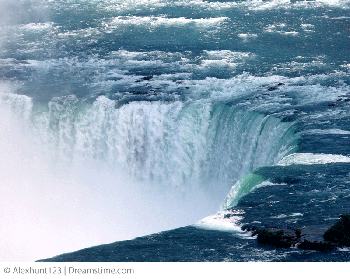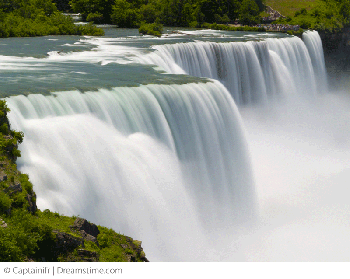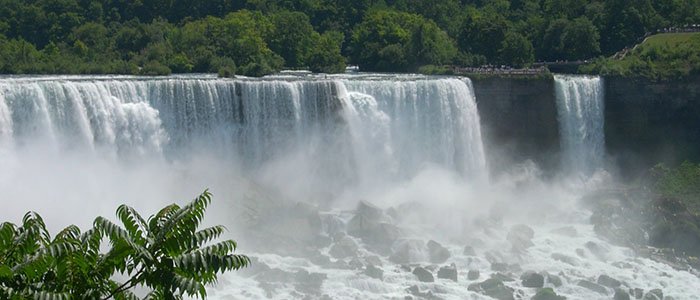Niagara Falls
Geology
The splendor of Niagara Falls entices millions of visitors each year to view its plunging, foaming waters.
Overview
Niagara Falls, New York
The splendor of Niagara Falls entices millions of visitors each year to view its plunging, foaming waters. Based on evidence of erosion upstream, it appears that the waterfall was originally 7 miles (11 km) upriver, near the modern city of Queenston, Ontario. The water has been wearing away the rocks ever since, reaching its current location.
The Falls are a perfect place to talk about the role of assumptions in interpreting geological history. Evolutionists say that the rock layers slowly formed some 450 million years ago at the bottom of a tropical salt sea; then during the Ice Age, melting water gradually eroded the landscape over a period of nearly ten thousand years.
These conclusions are based on assumptions about the past that ignore the Bible´s true eyewitness account of a one-time, worldwide Flood about 4,500 years ago. This Flood could easily form most of the earth´s fossil-bearing rock layers by rapid processes we no longer see on that scale. Erosion during subsequent centuries would have been much quicker than today, for a variety of reasons. (For example, in one stretch of the river, the falls once cut through loose rubble, not solid rock.)
Interpreting the evidence from a biblical worldview allows us to discover new insights about the world around us, which we would otherwise miss. If possible, visit some spots along the river where the falls once flowed—not just the modern falls. As you examine these sites, imagine what the world must have been like during the Ice Age, not long after the Flood.
Points of Interest
Niagara River
The Niagara River, flowing south to north, empties Lake Erie into Lake Ontario. (Lake Erie stands 325 feet [99 m] higher in elevation than Lake Ontario.) The river divides into two separate channels around Goat Island, forming the Canadian Falls and American Falls. Upstream, you can take a jet boat tour, or ride an aero car above the whirlpool three miles upstream.

Horseshoe Falls
The Canadian Falls, more commonly known as Horseshoe Falls, is the largest of the falls with a width of over 2,200 feet (761 m) and carries more than 80% of the water over its edge. At its highest volume Horseshoe Falls sends more than 650,000 gallons (2.5 million liters) of water per second over its crest to the pool 170 feet (52 m) below. Just imagine the forces that were unleashed by the melting waters of the Ice Age!

American Falls
The waters in the American Channel subdivide around tiny Luna Island. The American, or Rainbow Falls, over 850 feet (260 m) wide, carries a volume of over 100,000 gallons (378,500 liters) of water per second to its rocky landing between 70 and 110 feet (20–35 m) below. Erosion will continue to add more rubble to the base of these falls, while the top of the falls will continue to retreat upstream. These processes together should eventually increase the length over which the water drops and reduce the severity of the drop, so that the falls become just rapids.

Helpful Tips
- Dress warmly! Niagara Falls can be chilly even in the height of summer.
- Bring your passport (or any other ID required) so that you can cross the international border to see both falls up close.
- Don´t miss the nightly fireworks show. Check https://www.niagarafallstourism.com/fireworks/ for details.
- For more detailed explanation on "The Erosion of the Niagara Gorge," see Proceedings of the Second Conference on Creation Geology (2008), pp. 6-7, 2008.
Recommended Resources

Answers in Genesis is an apologetics ministry, dedicated to helping Christians defend their faith and proclaim the good news of Jesus Christ.
- Customer Service 800.778.3390
- © 2024 Answers in Genesis




